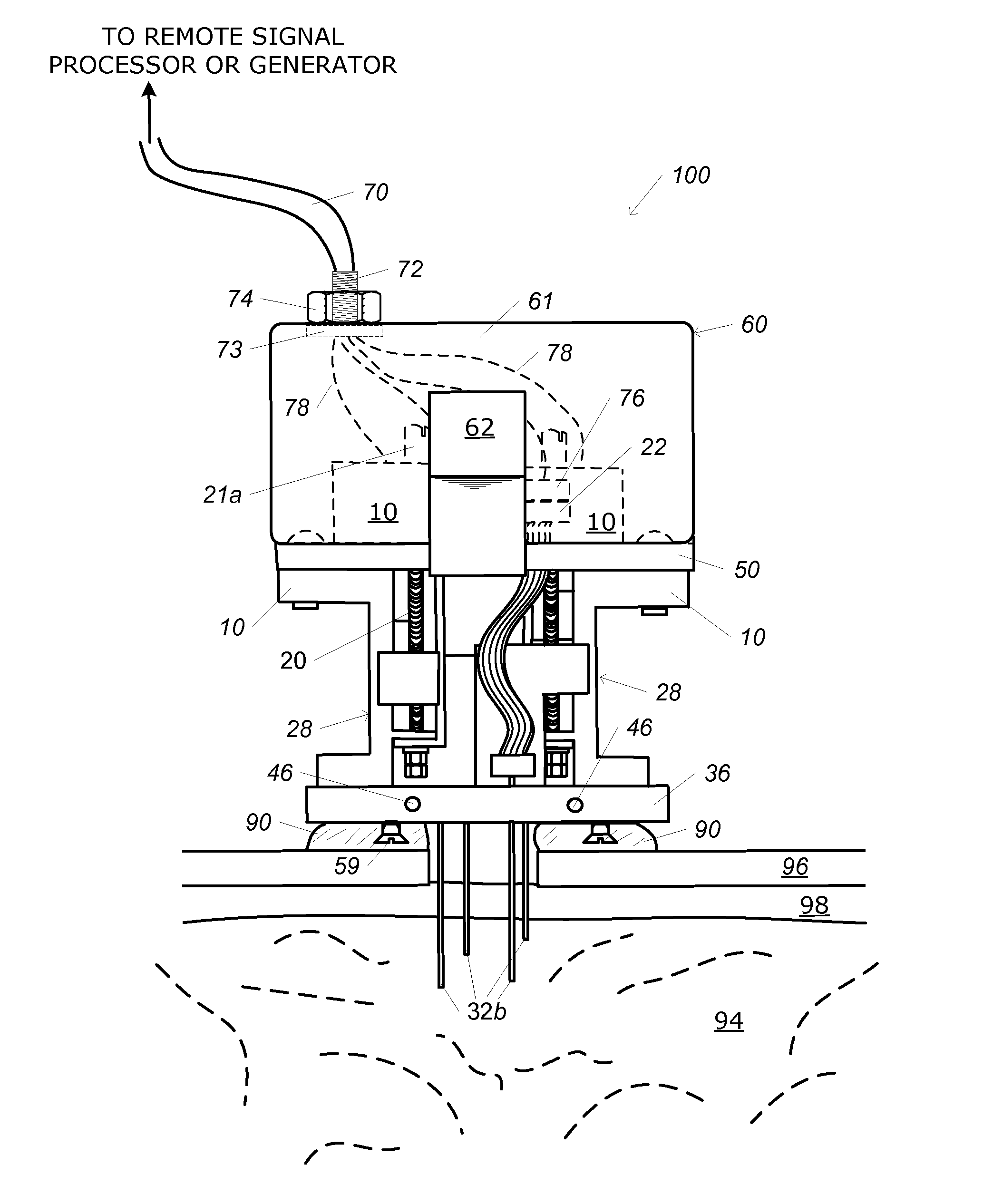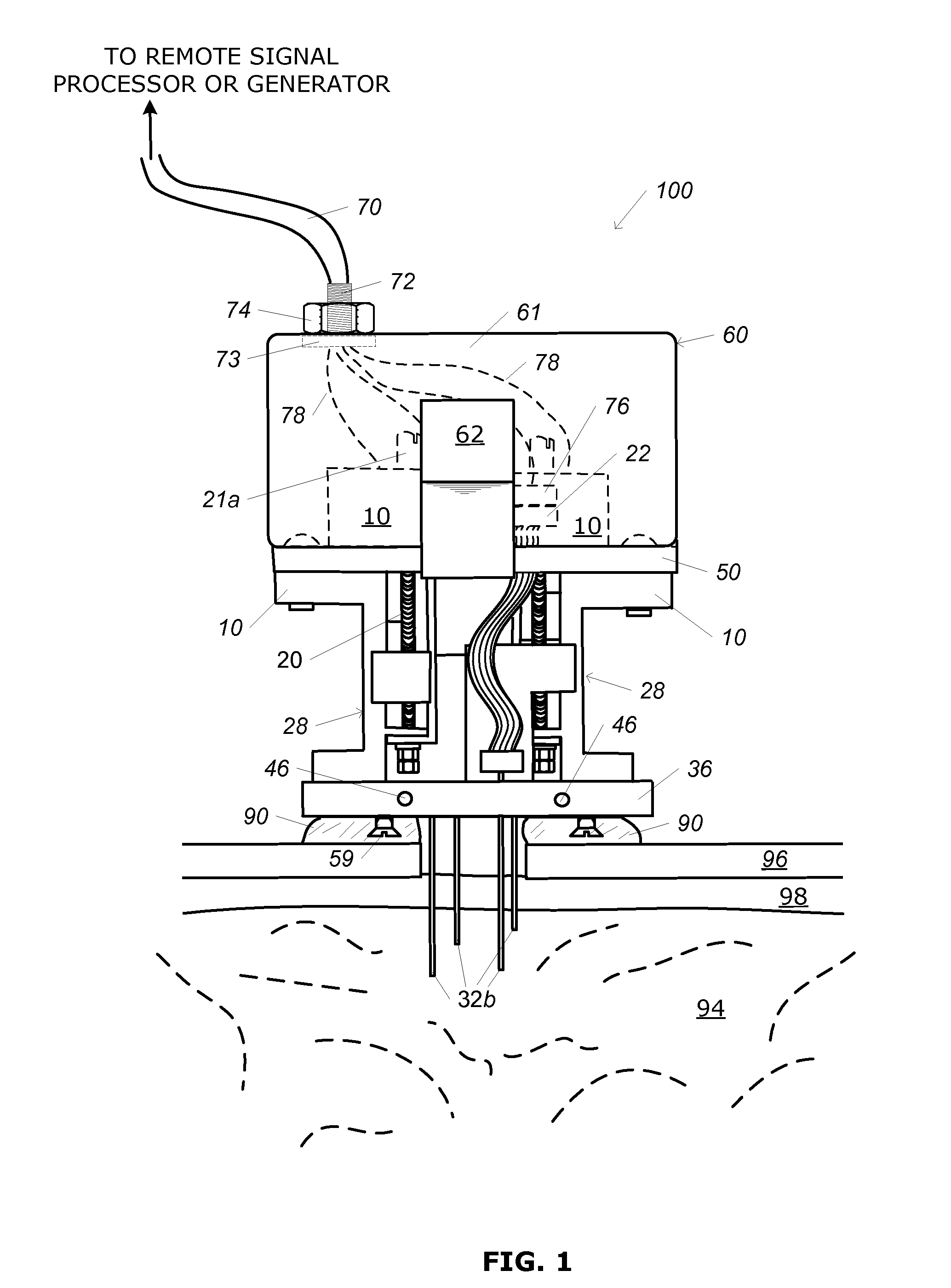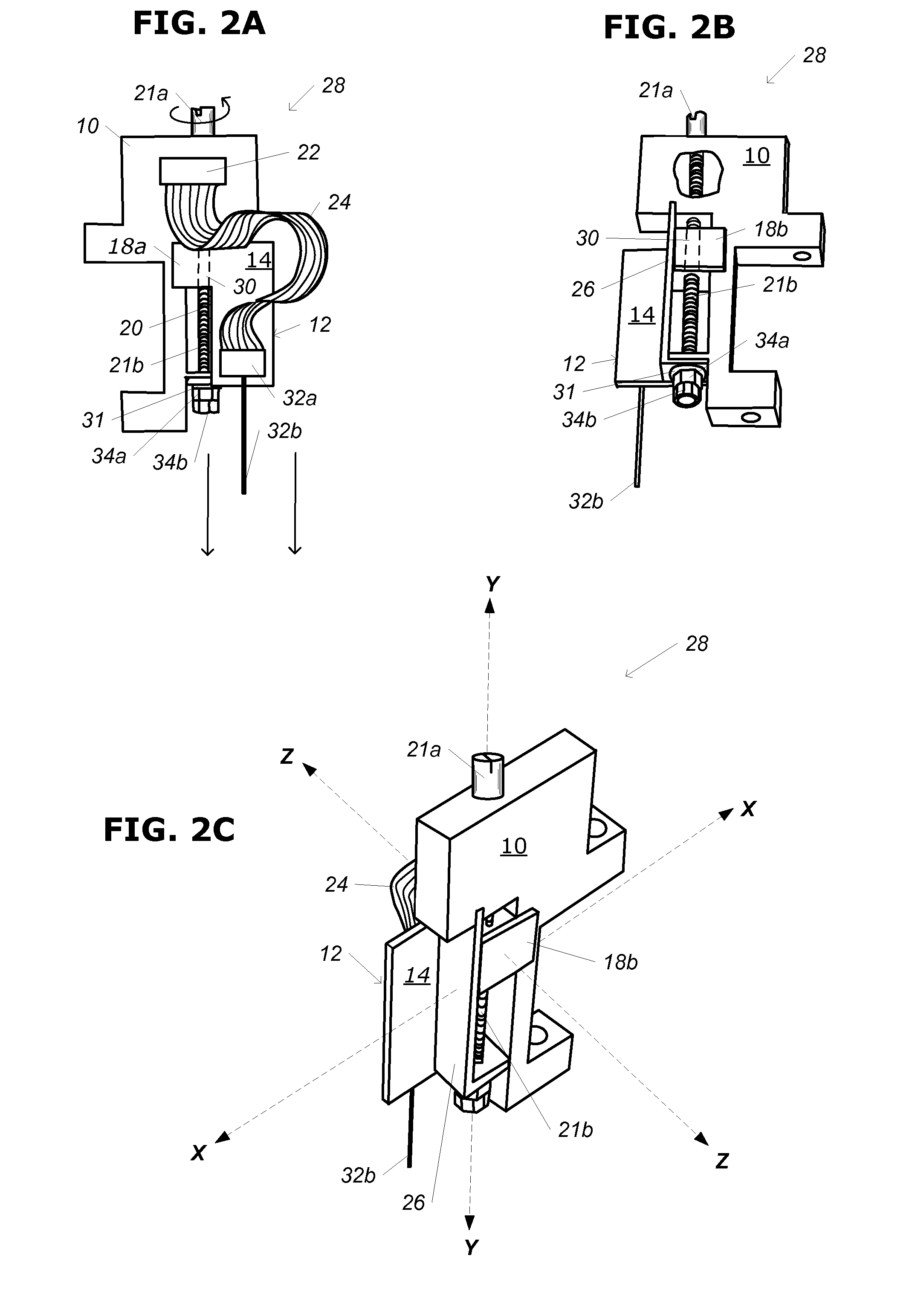Microdrive and Modular Microdrive Assembly for Positioning Instruments in Animal Bodies
a micro-drive and assembly technology, applied in the field of micro-drives and modular micro-drive assemblies, can solve the problems of low-ductility instruments, such as probes and electrodes made of silicon, carbon fiber, rigid metal, etc., and achieve the effect of precise horizontal and vertical positioning and low ductility
- Summary
- Abstract
- Description
- Claims
- Application Information
AI Technical Summary
Benefits of technology
Problems solved by technology
Method used
Image
Examples
Embodiment Construction
[0031]Prior to the present invention, it has not been possible to use substantially rigid, low ductility instruments, such as silicon or carbon fiber probes, glass and metal needles, in certain medical and scientific research applications because the substantially rigid instruments could not be dynamically altered or deformed (i.e., bent, angled or curved) in order to install them on the known instrument driving devices. Microdrives and modular microdrive assemblies according to embodiments of the present invention are capable of positioning both substantially rigid low ductility instruments and substantially flexible high ductility instruments in animal bodies, without altering their given geometries and without using a stereotactic surgery guiding apparatus.
[0032]Microdrive
[0033]As previously stated, the microdrive comprises a frame, a drive rod rotatably mounted to the frame, and a carriage having a platform configured to hold the instrument in a position adjacent to a location o...
PUM
 Login to View More
Login to View More Abstract
Description
Claims
Application Information
 Login to View More
Login to View More - R&D
- Intellectual Property
- Life Sciences
- Materials
- Tech Scout
- Unparalleled Data Quality
- Higher Quality Content
- 60% Fewer Hallucinations
Browse by: Latest US Patents, China's latest patents, Technical Efficacy Thesaurus, Application Domain, Technology Topic, Popular Technical Reports.
© 2025 PatSnap. All rights reserved.Legal|Privacy policy|Modern Slavery Act Transparency Statement|Sitemap|About US| Contact US: help@patsnap.com



